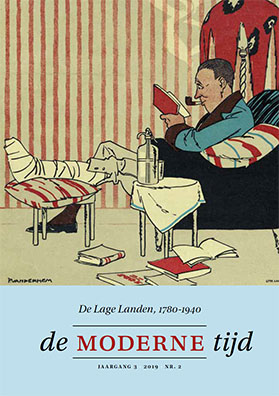Paul ReefKoninklijke inhuldiging ‘nieuwe stijl’? Machtsrepresentatie en betekenisverlening bij de inhuldiging van Willem III na de grondwetswijziging van 1848 98-127
Abstract (EN)
The royal inauguration’s ‘new clothes’? The representation and reception of power at the inauguration of William III after the constitutional reform of 1848.In recent years, historians have shown how royal rituals were a major site for legitimating and contesting power in Europe’s long nineteenth century. This article calls for attention to cases with a more ambiguous political meaning and function. It analyses how the Dutch King William III’s 1849 inauguration ceremony represented the new political order following the far-reaching 1848 constitutional reform. The ceremony was planned surprisingly hastily without much attention to political events and lacked symbolical value, especially compared to other countries. Although the tradition of inauguration was organized and perceived as a ritual of political transition, it ultimately had little long-term political impact.
Tessel X. DekkerDriedimensionaal nieuws. Het Nederlandsch Panopticum als concurrent van het geïllustreerde dagblad, 1882-1919 128-152
Abstract (EN)
Three-dimensional news. The Amsterdam wax museum as a competitor of the illustrated newspaper, 1882-1919.The nineteenth-century wax museum can be viewed as a contemporary mass medium that showed people scenes from the news. The Nederlandsch Panopticum was the first of its kind in the Netherlands, located in Amsterdam between 1882 and 1919. As an informative visual medium, the Panopticum had to compete with other media, like the illustrated newspaper, for the attention of the public. At the same time, the wax museum also depended on photographs published in these same papers: wax models were often, and in the course of time almost exclusively, modelled after photos. This reciprocal relationship can be seen as an example of ‘intermediality’. In the end, the wax museum lost ground, foremost, to the new mass medium of the time, cinema, which took over both as an urban attraction and as a popular visual medium.
Erica van BovenEen populaire aristocraat. Arthur van Schendel en het lezerspubliek in de jaren dertig 153-169
Abstract (EN)
A popular aristocrat. Arthur van Schendel and the reading public in the 1930s.In Dutch literary culture of the first half of the twentieth century, intellectual elite and general public were not only separate, but even opposite categories. ‘Highbrow’ and ‘middlebrow’ held polarized positions in matters of cultural hierarchy and literary taste, which led to fierce debates. Strikingly, one author was able to bridge this gap: Arthur van Schendel (1874-1946) appealed both ends of the spectrum and thus had an exceptional, connecting role in the cultural divides of the Interbelluminterwar period. This article analyses the responses to Van Schendels so-called ‘Dutch novels’ in order to find out what made Arthur van Schendel highly valued by leading professionals as well as loved by the reading audience.
Boekzaal der geleerde wereld 170-183
- Rob Delvigne en Jan Jaap Heij, In de schaduw van Cuypers. Georg Sturm (1855-1923), monumentaal decorateur. Amersfoort: Bekking & Blitz, 2017. (Lieske Tibbe)
- Alex Rutten, De publieke man. Dr. P.H. Ritter Jr. als cultuurbemiddelaar in het interbellum. Hilversum: Verloren, 2018. (Ward de Kock)
- Femke Knoop, Hirsch & Cie Amsterdam (1882-1976). Haute couture op het Leidseplein. Hilversum: Verloren, 2018. (Clé Lesger)
- Robert-Jan Wille, Mannen van de microscoop. De laboratoriumbiologie op veldtocht in Nederland en Indië, 1840-1910. Nijmegen: Vantilt, 2019. (Wessel de Cock)
- Rob Hartmans, De revolutie die niet doorging. De tragedie van Troelstra, november 1918. Utrecht: Omniboek, 2018. (Gaard Kets)

